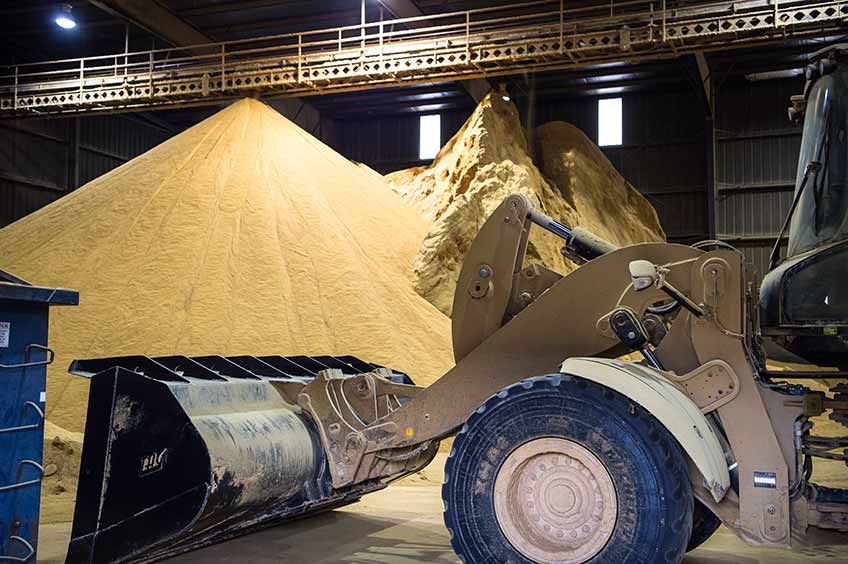From Farm to Refinery: Moving to a Bio-Based Economy

August 19, 2019— According to the Department of Energy’s 2016 Billion-Ton Report, the U.S. produces nearly a billion tons of biomass resources per year that could be converted to biofuels and other bioproducts. However, the road from biomass to biofuels is a complicated one. Researchers ask: What infrastructure will it take to transform these ample biomass resources into biofuel and other bioproducts?
In their new report, CEMAC researchers Margaret Mann, Mary Biddy, and Chad Augustine, along with co-authors from the Idaho National Laboratory and the Oak Ridge National Laboratory analyzed the agricultural and preprocessing equipment requirements and supporting equipment manufacturing expansion to realize the 2016 Billion-Ton projections.
Bio-Based Economy by the Numbers
In “Evaluation of Agricultural Equipment Manufacturing for a Bio-Based Economy,” researchers selected five major biomass resources, such as corn stover, switchgrass, and poplar, from agricultural sources likely to be used in biofuels and bioproducts. They then evaluated the agricultural machinery requirements used throughout the bio-based supply chain to harvest and deliver the biomass to biorefineries and the economic impacts of the manufacture of the required equipment.
Applying models such as the Oak Ridge National Laboratory Supply Characterization Model (SCM), the Idaho National Laboratory Integrated Biomass Supply Analysis and Logistics model (IBSAL), and the Economic Impact Analysis for Planning model (IMPLAN), researchers concluded the following:
- Biofuel output: The selected major biomass resources could generate 230-340 million tons of biomass annually (as projected in the Billion-Ton Report) and could support between 240-358 potential biorefineries that convert biomass to biofuels.
- Agricultural equipment requirements: Researchers explored equipment requirements to convert the 230-340 million tons of biomass to biofuels and other bioproducts.
- In the short term, 280,000 pieces of equipment with a $36 billion market value
- In the long term, 380,000 pieces of equipment with a $47 billion market value
- Supply of agricultural equipment: 70-80% of total U.S. agricultural equipment demand is met by domestic manufacturers. The researchers found that, barring substantial shifts in international trade policy or global manufacturing that the U.S. production would remain largely unchanged, meeting 70-80% of U.S. equipment demand.
- Economic impacts: Researchers evaluated the likely economic impacts from the production of the required equipment to process the billion tons of biomass. They found that assuming 75% of agricultural equipment is manufactured domestically, the direct long-term employment impacts is more than 56,000 full-time jobs, resulting in nearly $11 billion in direct value added. The sum of total long-term impacts is more than 340,000 full-time jobs and $40 billion in total value added.
Turning the technology tide
The researchers also interviewed farm equipment manufacturers and examined recent agricultural equipment transitions to pinpoint drivers of the adoption of new technologies in the agricultural equipment industry. They found that improved operational efficiency, environmental sustainability, and quality of collected biomass, among others, encouraged the acquisition of new equipment.
However, barriers to adoption of these new technologies pose a challenge to modernization.
To overcome these roadblocks and accelerate implementation of such equipment and practices, researchers suggested a number of paths forward. Better education of farmers and improved information dissemination channels to stakeholders and decisionmakers could help turn the technology tide.
Biofuels hold promise, yet the industry is still in its infancy in the U.S. Shifting biofuels into prime time will involve addressing the variety of economic, structural, behavioral, and policy factors impacting adoption rates.
Back to JISEA News >
